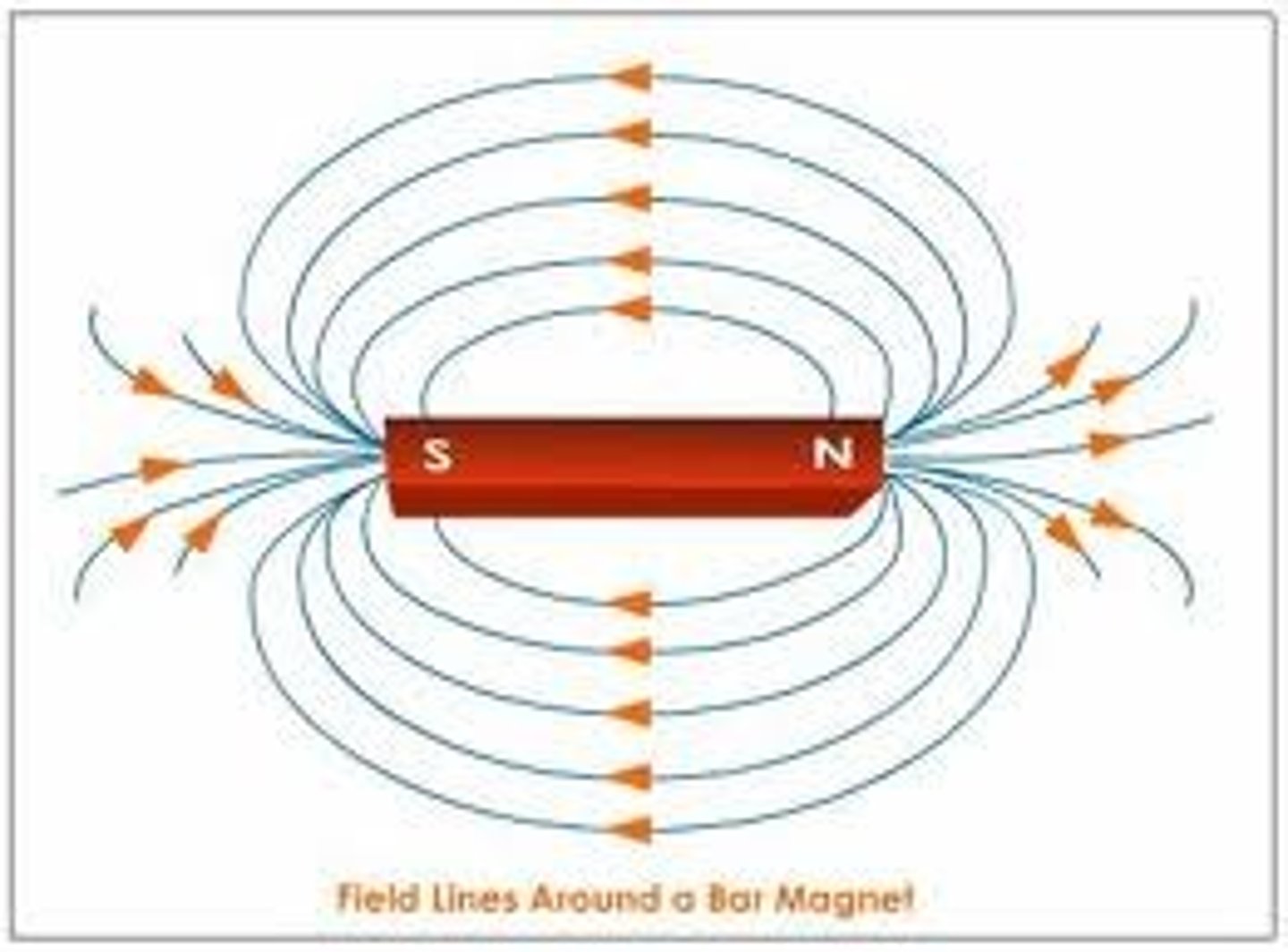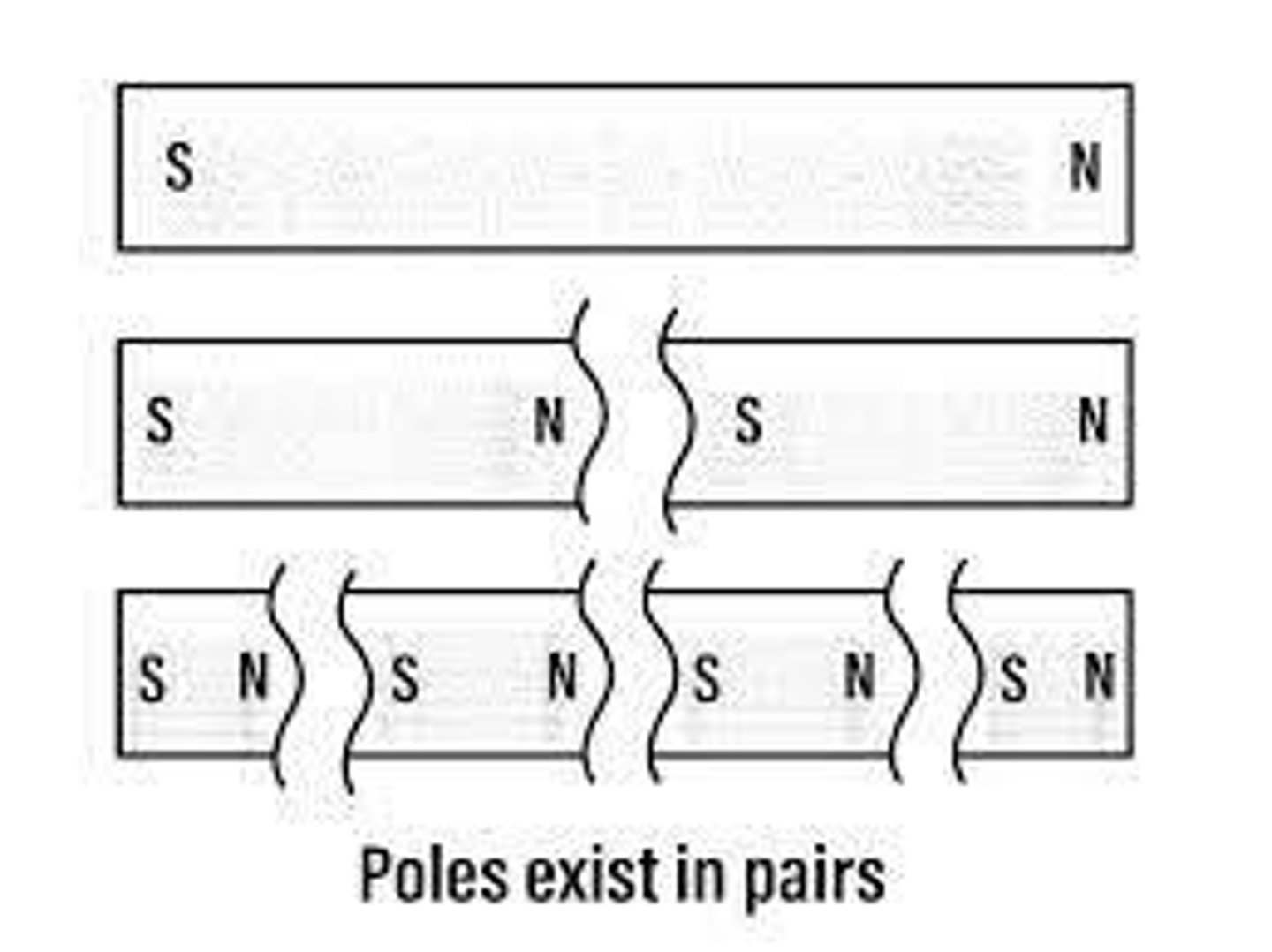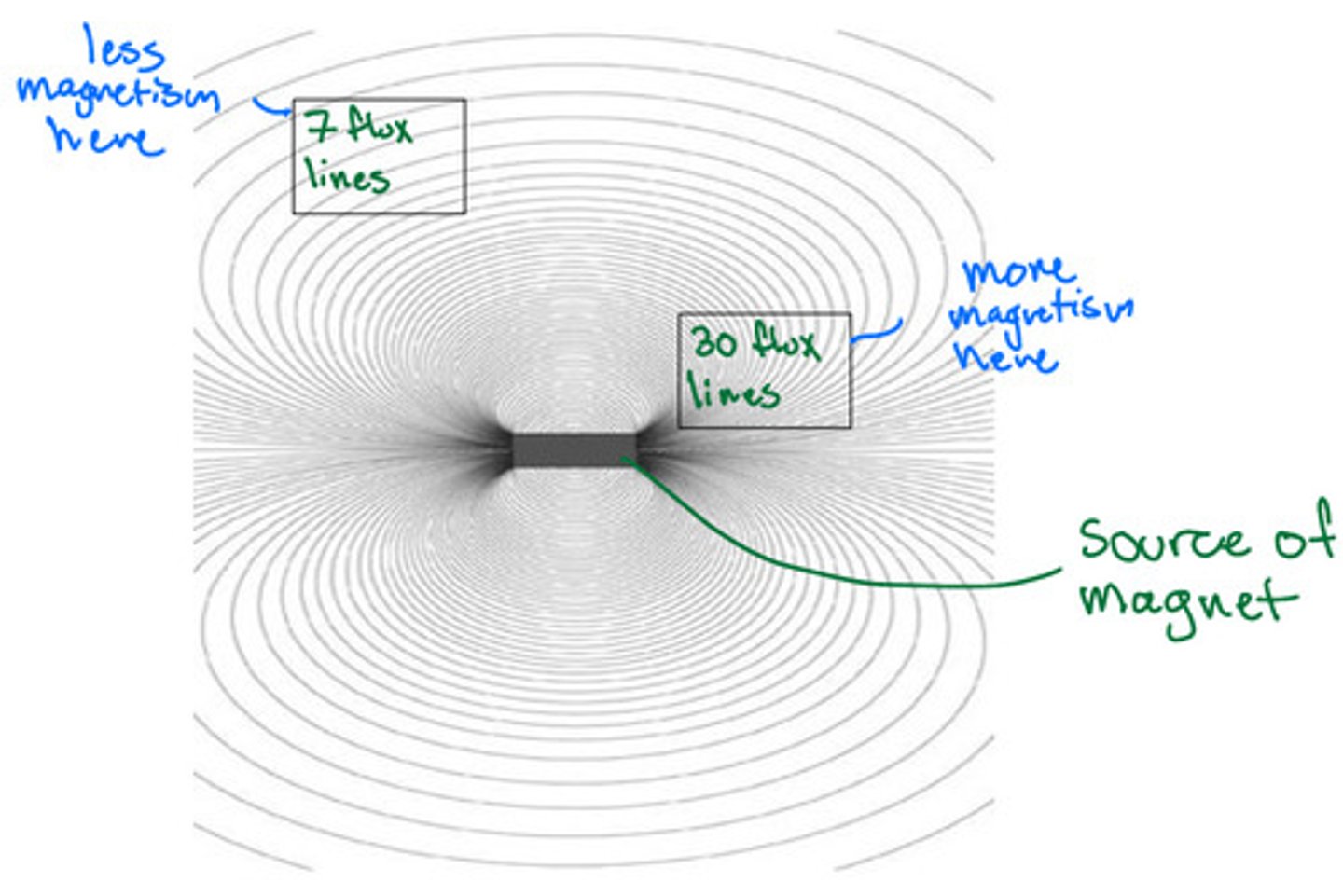RADT 142 - Magnetism
1/21
There's no tags or description
Looks like no tags are added yet.
Name | Mastery | Learn | Test | Matching | Spaced |
|---|
No study sessions yet.
22 Terms
Magnetism
Charged particles in motion exhibit magnetism
magnetic domain
accumulation of many atomic magnets
Nature of Magnetism
Magnetic materials are usually in a non magnetized state
- domains in random arrangement
If domains align
- results in a magnetized material with a N to S orientation
- effectively one N pole and one S pole

S.I. unit of magnetism
Tesla (T)
Gauss (G)
Classification of Magnets
1. NATURAL (found in nature)
2. ARTIFICIAL PERMANENT (man made)
3. ELECTROMAGNETS (temporary) ...but man made
1. natural magnet
- Earth is a dipole
- Magnetite [lodestone or iron oxide (Fe3O4)]
• natural ore that exhibits magnetism
2. Artificial Permanent Magnets
- Hardened steel or alloy (alnico)
- Compass
3. electromagnets (temporary)
Created by a current of e- & iron core
magnetic permeability (susceptibility)
Ease with which a material can be magnetized (Harder = Easily Magnetized)
Magnetic Retentivity
Ability of a material to hold magnetization (very weak)
Relationship between permeability and retentivity
Inversely proportional
As Hardness Increases
Magnetization hold decreases
VISE VERSA
Magnetic Classification of Matter
1. Ferromagnetic Materials
2. Paramagnetic Materials
3. Diamagnetic Materials
4. Nonmagnetic Materials
1. Ferromagnetic Materials
-Materials that can be magnetized
-Exhibit strong magnetic properties
-Are strongly attracted to a magnet
2. Paramagnetic materials
-Materials that are only weakly attracted to a magnetic field
-Loosely influenced by a magnetic field
3. Diamagnetic materials
- Weakly repelled by a magnetic field. These materials cannot be magnetized and are not attracted to a magnet.
- Most elements in the periodic table, including copper, silver, and gold, are diamagnetic.
nonmagnetic materials
- Materials unaffected by a magnetic field
Magnetic Force Field
• Lines of force (magnetic flux lines)
• Direction
- N --> S outside the magnet
- S to N inside the magnet
Form a closed loop

Properties of a Magnetic field
Field lines pass through both magnetic & non magnetic materials
-concentrated by magnetic materials
-unaffected by non magnetic materials
Laws of Magnetism
1. Every magnet has two poles, designated N & S
2. Like poles repel; unlike poles attract (law of electromagnetics)
3. Analogous to Coulomb's laws
-The force between two magnetic poles varies directly as the strength of the poles and inversely as the square of the distance between poles.

Square Law Question
Two poles have a magnetic charge of 4 T and 6 T each and they are placed 2 meters apart. What is the force between them?
4 x 6 = 24 Newton
What if the poles were moved to 1 meter apart?
(D1/D2)^2 = F2/F1
(2/1)^2 = x/24 N
4/1 = x/24
96 Newton
Strength of Magnetism determined by
# of field lines per unit area
